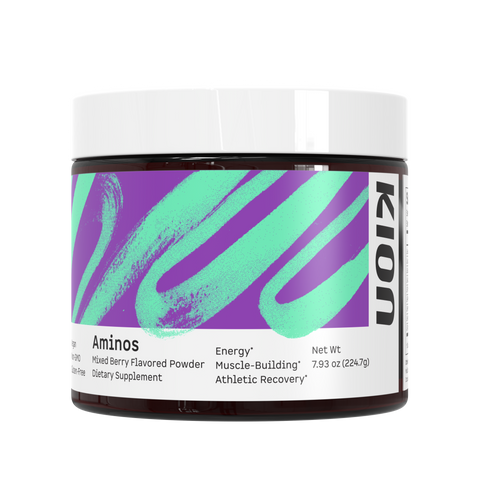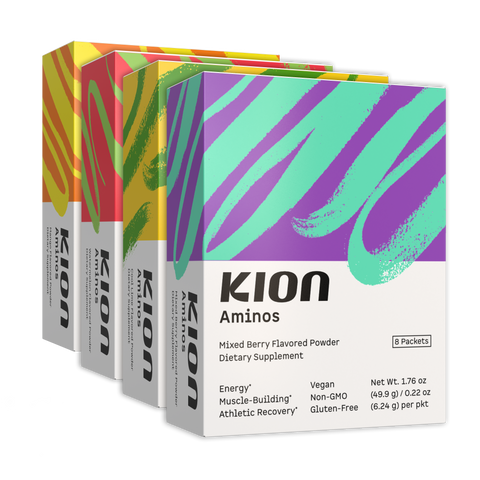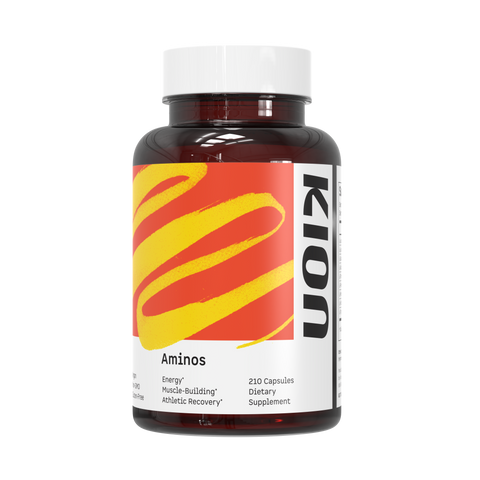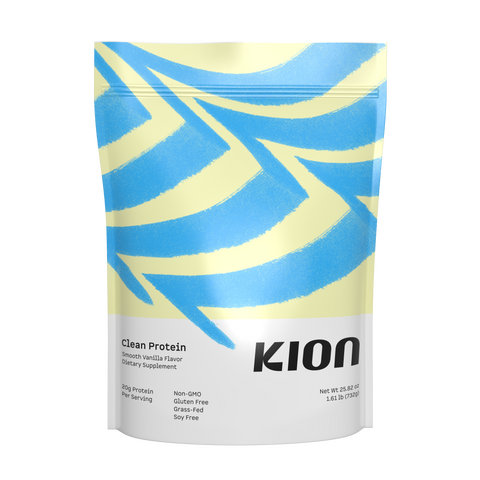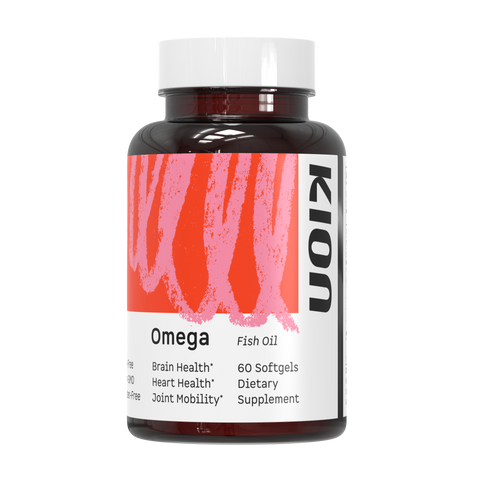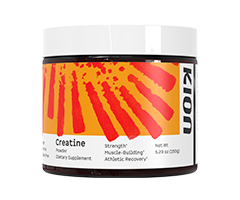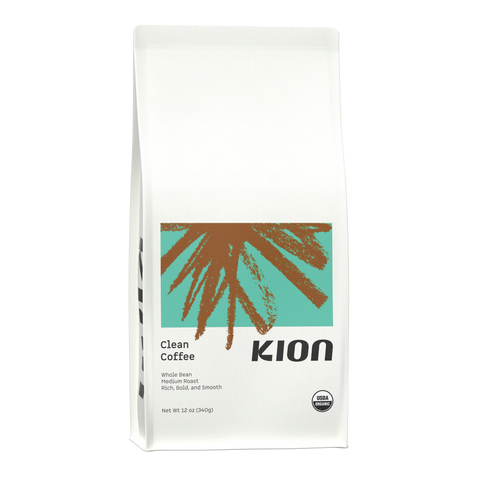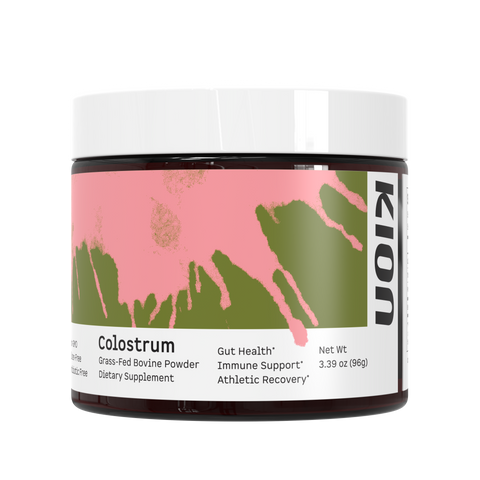Building lean, athletic muscle is about increasing muscle mass, strength, and endurance to enhance overall athletic performance.
It goes beyond the aesthetics of bodybuilding, instead focusing on improving functional abilities for various sports and physical activities.
The primary goal of building athletic muscle is to create a balanced, powerful, and agile physique that allows you to excel in your chosen sport or activity.
However, this can be challenging due to various factors athletes must consider and balance in their training and lifestyle. Some of the difficulties and challenges of building athletic muscle include:
- Finding the right balance between training volume, intensity, and frequency without overtraining or causing injury
- Individual differences due to genetics, age, fitness levels, and lifestyle habits
- Unique nutritional needs for specific goals and circumstances
- Balancing training demands with the need for recovery and rest
- Time commitment to training, nutrition, and recovery plans
- Plateaus and progress
- Injury prevention
If you want to build muscle, you need to be patient and stay committed to learning and adapting. Taking the time to understand how muscles grow will help you reach your goals faster and improve your performance in sports.
What the Science Says
You can't change certain things, genetics for example, that may put you at a disadvantage (or if you're lucky, an advantage) in the pursuit of an athletic, muscular body.
But with regular strength training and the right nutrition, absolute and relative strength can be increased.
When it comes to physical strength, you should aim to be as strong as possible for your sport. Studies show that people who can back squat at least twice their own body mass tend to perform better than those with lower relative strength. Research also shows that stronger athletes have more force and power, which helps with sports-specific performance.
One way to achieve this is by doing more reps per set. This can help create bigger changes, which will lead to better performance and faster recovery.
However, one of the most effective forms of building athletic muscle involves explosive ballistic type of training. This kind of exercise has been shown to help elite volleyball players jump higher, and baseball players run faster and throw further.
Studies also show that if you do heavy-load resistance training, your strength will increase more than if you do low-load exercises. But, doing low-load higher velocity training may be necessary for improving performance too.
Training with strength and power together is the best way to improve your skills in sports.
To get the most out of your training, use both heavy and light loads, as well as different forces and speeds in each session without increasing the total amount of time spent working out.
Practical and Simple Solutions
Incorporating practical and simple solutions into your athletic muscle-building routine can help you achieve your goals more effectively.
Progressive Overload: Gradually increase the intensity, volume, or frequency of your resistance training to stimulate continuous muscle growth. This can be achieved by adding weight, increasing reps or sets, or varying exercises.
Compound Exercises: Focus on multi-joint exercises like squats, deadlifts, and bench presses, as they involve multiple muscle groups and promote greater muscle activation and growth.
Active Recovery: Engage in low-intensity activities, such as walking or yoga, on rest days to promote blood flow and muscle recovery without causing additional muscle damage.
Adequate Sleep: Prioritize sleep, aiming for 7-9 hours per night, as it supports muscle recovery and growth hormone release.
Hydration: Stay well-hydrated, as dehydration can impair muscle function and recovery. Recommendations are to start exercise in a state of good hydration, hydrate during exercise, and replace fluid losses after exercise.
Eat Enough Calories: If you’re doing moderate levels of exercise (eg, 2 to 3 hours per day of intense exercise performed 5–6 times per week), high volume intense training (eg, 3 to 6 hours per day of intense training in 1 to 2 workouts for 5 to 6 days per week), or an elite athlete, consuming enough calories to offset what energy expenditure is needed to optimize training and performance. This includes adequate amounts of carbohydrate, protein, and fat.
Get Enough Protein: For building and maintaining muscle mass, an overall daily protein intake of 1.4 to 2.0 grams per kilogram of body weight is sufficient for most exercising individuals. Optimal doses for athletes to maximize athletic muscle building depend on various factors. But general recommendations are to consume 0.25–0.55 grams of a high-quality protein per kilogram of body weight, or an absolute dose of 20–40 grams. Furthermore, make sure protein is consumed throughout the day, although the optimal time period to consume protein after exercise is sooner, rather than later.
Essential Amino Acids (EAAs): Essential amino acids are the active components of protein that stimulate muscle protein synthesis (MPS). Aim to include high-quality, complete protein sources that contain all 9 EAAs in your diet (such as lean meats, fish, and dairy or consider supplementing with EAA products).
Essential Amino Acids (EAAs) and Athletic Muscle Building
When it comes to building athletic muscle, EAAs play an important role by naturally boosting energy, building lean muscle, and enhancing athletic recovery.
There are 20 different types of amino acids. Your body can make some amino acids, but EAAs must come from food. However, EAA availability varies from one protein to another, and not all whole-food proteins contain all 9 EAAs.
Complete, whole-food proteins (such as fish, poultry, eggs, beef, pork, dairy, and whole sources of soy) contain all nine EAAs.
Incomplete proteins, such as whole grains, vegetables, nuts, and beans, peas or lentils, may contain some, but not all EAAs.
Essential amino acids aren't just great for athletic muscle building, they are required for it, and they directly promote the energy, muscle, and recovery that's needed to build muscle.
EAAs help with energy by supporting the development, quality, and function of the powerhouses of our cells, the mitochondria. They also do this by providing direct sources of energy through the form of fatty acids or ketone bodies. Additionally, EAAs support muscular endurance by providing your muscles with energy.
EAAs support the creation of new muscle because muscle can only be built when all 9 EAAs are present. During strength training, small tears occur in the muscle, and EAAs directly support the repair and rebuilding of these tears.
And finally, EAAs support athletic recovery so you can bounce back fast. They do this by helping to reduce exercise-induced damage to muscles and by reducing exercise-related muscle soreness.
While protein from whole foods should be prioritized, supplemental protein and/or EAA supplements are a safe and convenient method of getting more high-quality EAAs for building athletic muscle.
Kion Aminos
Kion Aminos is a research-backed blend of all 9 EAAs that supports athletic muscle building by directly promoting the growth of bigger, healthier, and more efficient muscle.
During resistance training, both muscle protein breakdown (MPB) and muscle protein synthesis (MPS) are stimulated, but MPS is limited due to some of the EAAs in your muscle being oxidized and not available for synthesis.
Because Kion Aminos stimulates MPS and inhibits MPB, incorporating it into your workout tips the balance in favor of MPS, which leads to the creation of muscle.
Kion Aminos also gives you the motivation to get going and the stamina to work out longer because it naturally boosts energy at the cellular level by supporting energy production.
And during periods of intense exercise, Kion Aminos can supply the body with all of the EAAs it needs without having to take them out of the muscles, thereby reducing muscle fatigue.
For maximum benefit, you should take Kion Aminos before and after strength training (before to supply your muscles with energy and after to maximally stimulate MPS and support recovery—making your workouts more effective and giving you better results).
Summary
Building athletic muscle is a complex process that requires dedication, consistency, and an understanding of your body's needs.
By focusing on progressive resistance training, proper nutrition, and adequate recovery, you can unlock your full athletic potential.
EAAs play a critical role in this journey, and Kion Aminos provides a convenient and effective way to ensure your body has the necessary tools for success.
Build lean, athletic muscle with Kion Aminos
Buy Now
Scientific Research
- Lopes Dos Santos M, Uftring M, Stahl CA, et al. Stress in Academic and Athletic Performance in Collegiate Athletes: A Narrative Review of Sources and Monitoring Strategies. Front Sports Act Living. 2020;2:42.
- Matsui Y, Takayanagi S, Ohira T, et al. Effect of a leucine-enriched essential amino acids mixture on muscle recovery. J Phys Ther Sci. 2019;31(1):95-101.
- Mayo Clinic. Overuse injury: how to prevent training injuries. https://www.mayoclinic.org/healthy-lifestyle/fitness/in-depth/overuse-injury/art-20045875. Accessed April 14, 2023.
- Negro M, Segreto V, Barbero M, et al. Essential Amino Acids (EAA) Mixture Supplementation: Effects of an Acute Administration Protocol on Myoelectric Manifestations of Fatigue in the Biceps Brachii After Resistance Exercise. Front Physiol. 2018;9:1140.
- Newsholme EA, Blomstrand E. Branched-chain amino acids and central fatigue. J Nutr. 2006;136(1 Suppl):274S-6S.
- Ortiz RO Jr, Sinclair Elder AJ, Elder CL, Dawes JJ. A Systematic Review on the Effectiveness of Active Recovery Interventions on Athletic Performance of Professional-, Collegiate-, and Competitive-Level Adult Athletes. J Strength Cond Res. 2019;33(8):2275-2287.
- Phillips SM, Van Loon LJ. Dietary protein for athletes: from requirements to optimum adaptation. J Sports Sci. 2011;29 Suppl 1:S29-S38.
- Ralston GW, Kilgore L, Wyatt FB, Baker JS. The Effect of Weekly Set Volume on Strength Gain: A Meta-Analysis. Sports Med. 2017;47(12):2585-2601.
- Ruocco C, Segala A, Valerio A, Nisoli E. Essential amino acid formulations to prevent mitochondrial dysfunction and oxidative stress. Curr Opin Clin Nutr Metab Care. 2021;24(1):88-95.
- Schoenfeld BJ, Grgic J. Effects of range of motion on muscle development during resistance training interventions: A systematic review. SAGE Open Med. 2020;8:2050312120901559.
- Schoenfeld BJ. The mechanisms of muscle hypertrophy and their application to resistance training. J Strength Cond Res. 2010;24(10):2857-2872.
- Stone MH, Hornsby WG, Suarez DG, Duca M, Pierce KC. Training Specificity for Athletes: Emphasis on Strength-Power Training: A Narrative Review. J Funct Morphol Kinesiol. 2022;7(4):102.
- Suchomel TJ, Nimphius S, Stone MH. The Importance of Muscular Strength in Athletic Performance. Sports Med. 2016;46(10):1419-1449.
- Vitale KC, Owens R, Hopkins SR, Malhotra A. Sleep Hygiene for Optimizing Recovery in Athletes: Review and Recommendations. Int J Sports Med. 2019;40(8):535-543.
- Waskiw-Ford M, Hannaian S, Duncan J, et al. Leucine-Enriched Essential Amino Acids Improve Recovery from Post-Exercise Muscle Damage Independent of Increases in Integrated Myofibrillar Protein Synthesis in Young Men. Nutrients. 2020;12(4):1061.
- Wernbom M, Augustsson J, Thomeé R. The influence of frequency, intensity, volume and mode of strength training on whole muscle cross-sectional area in humans. Sports Med. 2007;37(3):225-264.
- Wolfe RR. Branched-chain amino acids and muscle protein synthesis in humans: myth or reality?. J Int Soc Sports Nutr. 2017;14:30.



